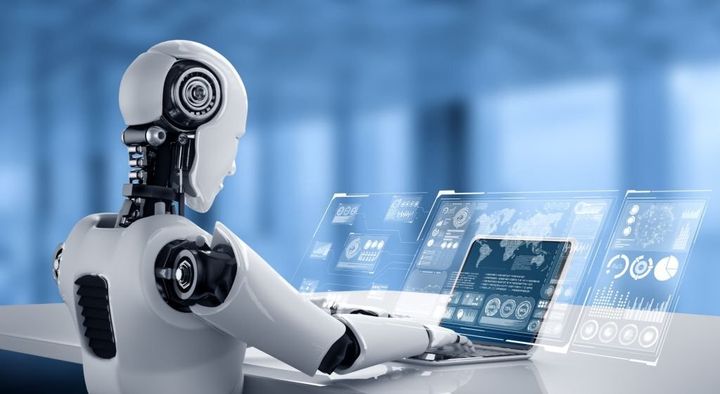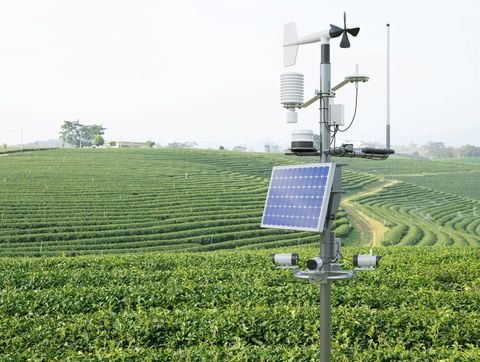
Tips and Advice for Adopting Robotics and Automation
Robotics automation involves the use of robots – programmable machines capable of carrying out a complex series of actions autonomously – to perform tasks that were traditionally done by humans. This field has evolved significantly from simple, repetitive industrial robots to sophisticated machines capable of perception, decision-making, and collaboration with humans. The emergence of robotics automation solutions stems from the ongoing pursuit of increased efficiency, productivity, safety, and quality across various industries.
Why Robotics Automation is Increasingly Important

Robotics automation is no longer a futuristic concept; it is a present-day reality with profound implications for businesses, workers, and society as a whole. Its increasing importance stems from its ability to address critical challenges and unlock significant benefits in a rapidly changing global landscape.
Who It Affects
Businesses: Automation can lead to increased productivity, improved quality, reduced costs, and enhanced safety, providing a significant competitive edge.
Workers: While there are concerns about job displacement, automation also creates new jobs in areas like robot design, programming, maintenance, and management. It can also relieve workers from dangerous and repetitive tasks.
Consumers: Ultimately, the efficiencies gained through automation can lead to lower prices, higher-quality products, and faster service delivery.
Problems It Solves
Low Productivity and Inefficiency: Robots can perform tasks faster, more consistently, and for longer durations than humans, leading to significant increases in productivity and overall efficiency.
Quality Control Issues: Automated systems can perform tasks with a high degree of precision and consistency, reducing errors and improving the quality of products and services.
Safety Hazards: Robots can be deployed in environments that are dangerous or physically demanding for humans, such as welding fumes, extreme temperatures, or heavy lifting, thereby improving workplace safety and reducing accidents.
Labor Shortages and Rising Costs: In many industries, there are increasing challenges in finding and retaining a skilled workforce. Automation can help fill these gaps and control labor costs over the long term.
Repetitive and Mundane Tasks: Automation can take over tasks that are repetitive, monotonous, and potentially demotivating for human workers, allowing them to focus on more engaging and fulfilling responsibilities.
Recent Updates and Trends
The field of robotics automation is characterized by continuous innovation and rapid advancements. Over the past year (late 2024 to mid-2025), several key trends and developments have shaped the industry.
Increased Adoption of Collaborative Robots (Cobots): Cobots, designed to work safely alongside humans in shared workspaces, have seen a surge in adoption. Their ease of programming, flexibility, and safety features make them ideal for SMEs and applications requiring human-robot interaction.
Advancements in AI and Machine Learning Integration: Integrating artificial intelligence (AI) and machine learning (ML) with robots is enhancing their capabilities significantly. AI-powered robots can now perform more complex tasks involving perception, decision-making, and adaptation to changing environments. This includes improved object recognition, path planning, and predictive maintenance.
Growth in Mobile Robotics and Autonomous Guided Vehicles (AGVs): Mobile robots and AGVs are becoming increasingly sophisticated and are being widely used in logistics, warehousing, and even healthcare settings for tasks like transportation of goods, inventory management, and delivery of supplies.
Focus on Robotics-as-a-Service (RaaS): The RaaS model, where companies lease robotic equipment and services rather than making large upfront purchases, is gaining traction. This lowers the barrier to entry for smaller businesses and provides greater flexibility.
Laws and Policies
The deployment of robotics automation is influenced by various laws, regulations, and government programs aimed at promoting technological advancement, ensuring worker safety, and addressing ethical considerations.
Industrial Safety Regulations: In India, factories and workplaces deploying robots must adhere to stringent safety regulations outlined by the Factories Act, 1948, and its subsequent amendments, as well as state-specific rules. These regulations cover aspects like the safeguarding of machinery, worker training, and risk assessments related to automated equipment.
Labor Laws and Automation: The impact of automation on employment is a subject of ongoing discussion. While there are no specific laws in India directly restricting robotics automation, labor laws and policies address issues like workforce retraining and redeployment to mitigate potential job displacement. Government skill development programs often include training in robotics and related technologies to prepare the workforce for the changing job market.
Data Privacy and Security: With increasing connectivity and AI capabilities in robots, data privacy and security are becoming important considerations, particularly in applications like healthcare and surveillance. India's Personal Data Protection Act, once enacted, will likely have implications for the collection, processing, and storage of data by robotic systems.
Government Initiatives for Manufacturing and Technology: Programs like "Make in India" and initiatives to promote Industry 4.0 often include provisions and incentives for the adoption of advanced technologies like robotics and automation to boost domestic manufacturing and innovation. These initiatives may provide financial support, infrastructure development, and skill development programs related to robotics.
Tools and Resources
Exploring and implementing robotics automation solutions requires access to a variety of tools, resources, and expertise.
Robotics Manufacturers and Suppliers: Companies that design, manufacture, and supply industrial robots, cobots, AGVs, and related automation equipment. Examples include ABB, Fanuc, KUKA, and local Indian manufacturers.
System Integrators: Companies that specialize in designing, building, and deploying custom robotics automation solutions for specific industrial needs. They often have expertise in integrating robots with existing machinery and software systems.
Robotics Software Platforms: Software platforms for robot programming, simulation, control, and data analytics. These tools help in designing, testing, and optimizing robotic applications. Examples include ROS (Robot Operating System) and proprietary software from robot manufacturers.
Industry Associations and Research Institutions: Organizations like the Robotics Society of India (RSI) and academic institutions with robotics research labs provide valuable information, networking opportunities, and educational resources.
Online Learning Platforms: Platforms like Coursera, Udemy, and edX offer courses on robotics, automation, AI, and related topics, enabling individuals and businesses to upskill their workforce.
Frequently Asked Questions
Will robots take all the jobs?
While automation will undoubtedly change the nature of work and may lead to displacement in some roles, it is also expected to create new jobs in areas related to the design, development, deployment, maintenance, and management of robotic systems. Many experts believe that the future will involve a collaboration between humans and robots.
Is robotics automation only for large companies?
No, while large enterprises were early adopters, the increasing affordability and flexibility of robots, particularly cobots and RaaS models, are making automation accessible to small and medium-sized enterprises (SMEs) as well.
How much does it cost to implement a robotics automation solution?
The cost can vary widely depending on the complexity of the application, the type of robot needed, the integration requirements, and the software and peripherals involved. It can range from a few thousand dollars for a simple cobot application to millions for a large-scale industrial automation system.
What are the key considerations when implementing robotics automation?
Key considerations include clearly defining the problem you want to solve, assessing the feasibility and ROI, ensuring workplace safety, training your workforce, and choosing the right technology and integration partner.
Conclusion
Robotics automation solutions offer a compelling pathway for businesses to enhance their efficiency, quality, safety, and competitiveness. As the technology continues to advance and become more accessible, its adoption is poised to accelerate across a wide range of industries. While careful planning, consideration of the workforce impact, and adherence to regulations are crucial, the potential benefits of robotics automation in driving productivity and innovation are undeniable. Embracing these intelligent machines will be a key factor for enterprises looking to thrive in the modern, technologically driven world.










